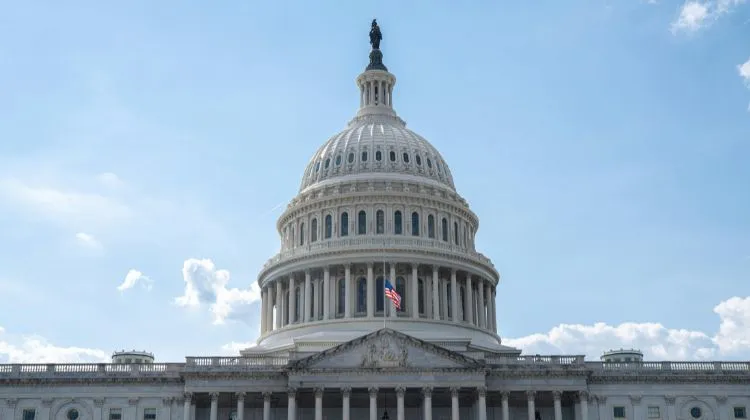
You have probably heard it all before. Promises of more funding and better care from the Department of Veterans Affairs have been common for years. But this time, the numbers are truly historic, and a potential VA budget increase of this size could finally bring real change for veterans like you.
Congress is looking at a massive funding package that just cleared a major hurdle in the Senate. This proposal could seriously impact your health care, your veterans benefits, and your future. Understanding what this VA budget increase means is the first step toward getting the services you earned.
Table of Contents:
- What’s Inside the Record-Breaking VA Budget?
- A Closer Look at the VA Budget Increase and What It Means for You
- Senate vs. House: The Political Path Forward
- What Can Veterans Do Right Now?
- Conclusion
What’s Inside the Record-Breaking VA Budget?
The Senate Appropriations Committee has moved forward with a record-breaking budget for the VA. This massive spending plan shows a bipartisan commitment to improving programs for military personnel who have served our country. This total topped what many analysts expected and reflects a growing awareness of the needs of the veteran community.
This plan is more than just a headline number. The money is divided into two main categories: mandatory and discretionary funding. Understanding the difference is important to see how the funds will be used to support you.
According to the committee’s summary, the VA spending is broken down like this:
| Funding Type | Proposed Amount | What It Covers |
|---|---|---|
| Mandatory Benefits | ~$300.4 Billion | Disability pay, pensions, education benefits, and PACT Act claims. |
| Discretionary Programs | ~$134 Billion | VA medical care, hospital operations, community care, and VA staff salaries. |
| VA Medical Care (Specific) | $113.8 Billion | Direct funding for veteran healthcare services and programs. |
A significant portion of this billion spending plan includes “advance appropriations.” This is a mechanism to set money aside for the next fiscal year ahead of time. It is a crucial tool to ensure that VA hospitals and clinics keep running smoothly, even if political debates in Washington cause delays in the regular budget increases annually.
The proposed discretionary funding is a major point of discussion. This is the part of the budget that Congress negotiates each year. It covers the operational costs of the VA health system, from paying doctors to keeping the lights on in clinics across the nation.
The huge amount dedicated to mandatory health care reflects the growing number of veterans seeking care for conditions related to toxic exposures. The PACT Act expanded eligibility for millions, creating a corresponding need for increased resources to handle disability claims and medical treatment. This budget aims to meet that demand head-on.
A Closer Look at the VA Budget Increase and What It Means for You
Large budget numbers in Washington do not always translate to better service at your local VA medical center. However, this proposed budget aims to fix some of the biggest problems you and other veterans face. You could see direct improvements in a few key areas that impact your daily life.
More Stable and Predictable Healthcare
Have you ever had an appointment rescheduled due to uncertainty over government funding? The advance funding within this VA budget is meant to stop that from happening. It creates a reliable financial foundation for all VA care services.
This stability allows VA health centers to plan for the long term and hire the best possible VA staff. It helps them retain talented medical professionals and ensure services run without interruption. For you, this means more dependable access to the health care you count on.
With consistent funding, local facilities can better manage patient loads and reduce wait times. This affects everyone from a newly separated Air Force veteran seeking a primary care doctor to a Marine Corps veteran needing specialized surgery. It creates a stronger, more resilient VA health system for all.
Faster Claims Processing (Finally?)
We have all heard the stories about the VA claims backlog. Many veterans wait months or even years for a decision on their earned benefits. A significant part of this new money could be allocated to the Veterans Benefits Administration (VBA) to address this issue.
More resources for the VBA could mean hiring a larger VA workforce dedicated to processing claims. It might also lead to investments in better technology to streamline the system and reduce manual errors. This is especially critical given the surge of new claims related to toxic exposures under the PACT Act.
While funding alone will not solve every bureaucratic problem, it is a vital part of the solution. It has the potential to cut down those agonizing wait times for decisions on benefits. This would help you get the financial support and recognition you have earned much faster.
Better Access to Mental Health and Specialty Services
Getting specialized medical care remains a challenge for many veterans. This funding increase places a strong focus on high-need areas. These include comprehensive mental health care, spinal cord injury treatment, and advanced prosthetics.
Proper funding enables the VA to recruit and retain top doctors, nurses, and therapists who specialize in these fields. Consistent budgets make Veterans Affairs a more attractive employer for skilled professionals. This directly improves the quality of care available to veterans with serious health issues across the country.
It also means expanding programs that have proven to be effective. More money can support telehealth initiatives, making mental health appointments more accessible. It can also provide veterans with access to the latest medical treatments and state-of-the-art equipment.
Help for Rural Veterans and Community Care
What if you live hours away from the nearest VA hospital? The VA Community Care program allows eligible veterans to see local, private doctors at the VA’s expense. This new budget continues to provide strong support for this essential program that addresses gaps in rural health access.
Increased funding can help expand the network of community providers, giving you more choices for care closer to home. It can also be used to simplify the approval and billing processes, which have sometimes been a source of frustration. This makes it easier for rural veterans, including many from the Coast Guard and Space Force, to get timely care without a long journey.
Infrastructure and Modernization
Many VA facilities are aging, and this budget acknowledges the need for serious upgrades. A portion of the funds is designated for military construction projects. This military construction funding is vital for modernizing old hospitals and building new, state-of-the-art clinics where they are needed most.
These improvements are not just about aesthetics; they are about patient safety and the quality of care. Modern facilities can accommodate new medical technologies and provide a better healing environment. The spending plan also includes funds for the National Cemetery Administration to ensure our nation’s heroes are laid to rest with the dignity they deserve.
Senate vs. House: The Political Path Forward
This massive VA budget is not a done deal yet. Both the Senate and the House of Representatives must agree on a final version of the bill. Currently, they each have their own plan, and there are key differences to resolve.
The House passed its own version of the bill earlier, with a lower total, as reported by Military Times. But the bigger difference is not just the dollar amount. The House bill came with more political provisions that created partisan division.
The Senate’s proposed budget is considered “cleaner.” This means it has fewer controversial policy riders attached to it. This lack of political fights gives it a much better chance of passing with support from both parties, which is good news for veterans who depend on this funding.
Lawmakers like Rep. Debbie Wasserman Schultz of the House Appropriations committee have been vocal about the need to fully fund veterans programs without adding unrelated political issues. The White House requested a substantial budget, and this Senate plan exceeds that request, signaling strong support. However, the negotiation process will be influenced by the broader debate on federal spending and White House efforts to manage the national debt.
Journalist Leo Shane III, who covers Congress for Military Times, has covered Washington for years and understands the political dynamics. His reporting on veterans policies suggests that while the Senate version has momentum, compromises will be necessary. Both chambers will need to reconcile their differences before a final spending plan can be sent to the President.
What Can Veterans Do Right Now?
While lawmakers in Washington work out the final details, you do not have to just sit on the sidelines and wait. There are several things you can do to prepare and advocate for yourself. Being proactive can help you make the most of these potential changes when they become reality.
First, stay informed about what is happening at your local VA facility. As budget news develops, you might see announcements about new programs or changes in appointment availability. Calling your local patient advocate or checking the facility’s website are good ways to get current updates.
Second, do not wait to file your claims. If you have been putting off filing for a disability related to your military service, now is a good time to start the process. Getting your claim into the system now means you will be in line when more resources become available to process them.
Finally, make your voice heard with your elected officials. You can call or write to your representatives and senators in Congress. Tell them your personal story and explain why a fully funded Department of Veterans Affairs is so important for you and your family during this period of military life transition.
Conclusion
This historic VA budget increase is a very positive sign from Washington. It suggests that lawmakers are listening and making veteran care a real priority. If this budget passes in a form close to the Senate’s proposal, it could lead to real, meaningful improvements in your health care and benefits.
But the work is not over. It will be up to veterans, their families, and advocates to watch closely and ensure this money is spent effectively and transparently. You must hold the VA and Congress accountable to their promises, because a larger VA budget should mean a better life for all who served.
Ultimately, a strong budget is the foundation for delivering the care and support our nation’s veterans have earned. This spending plan represents a significant step in the right direction. It provides hope for a future with a more responsive and well-equipped VA.




Leave a Reply